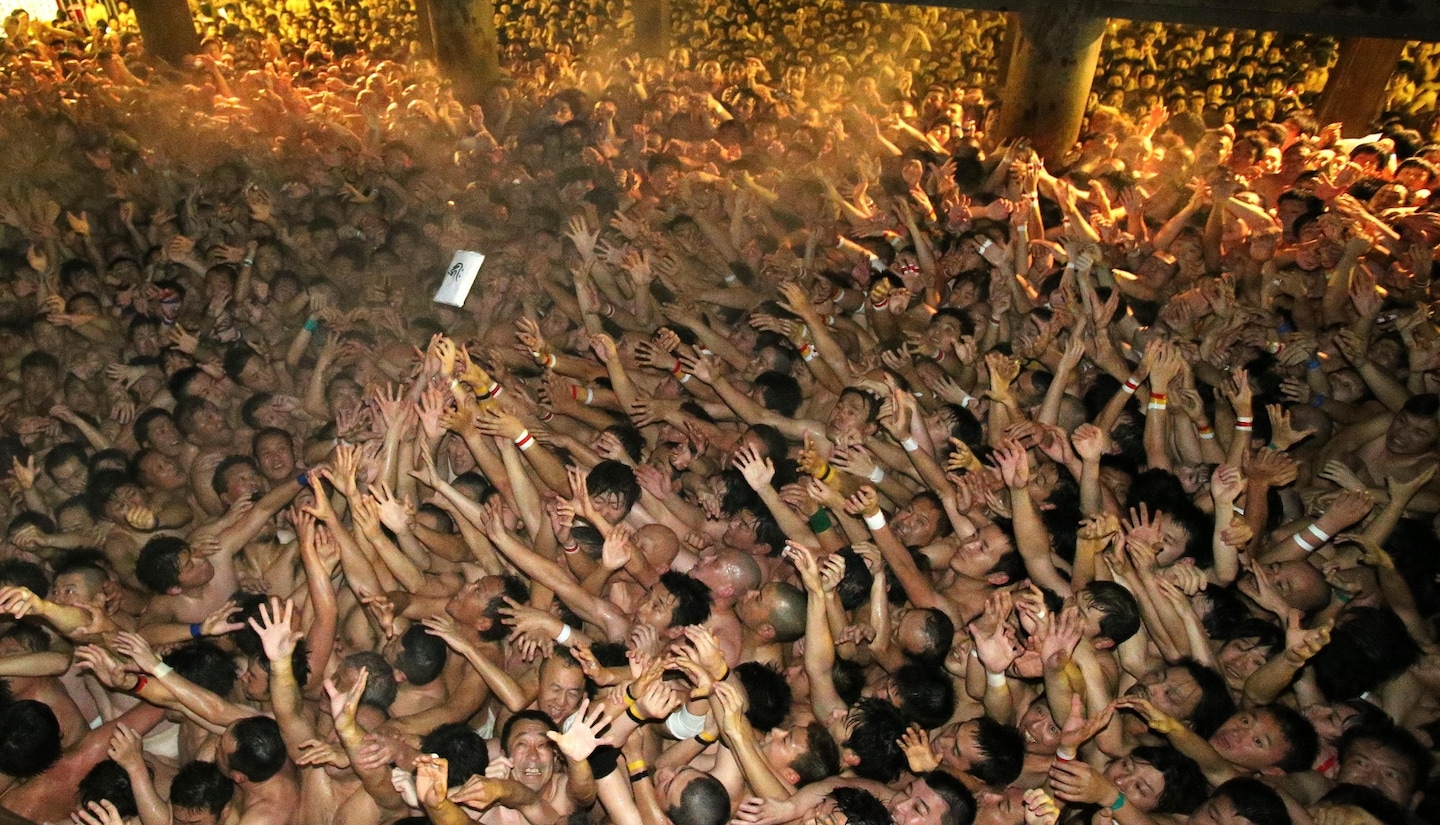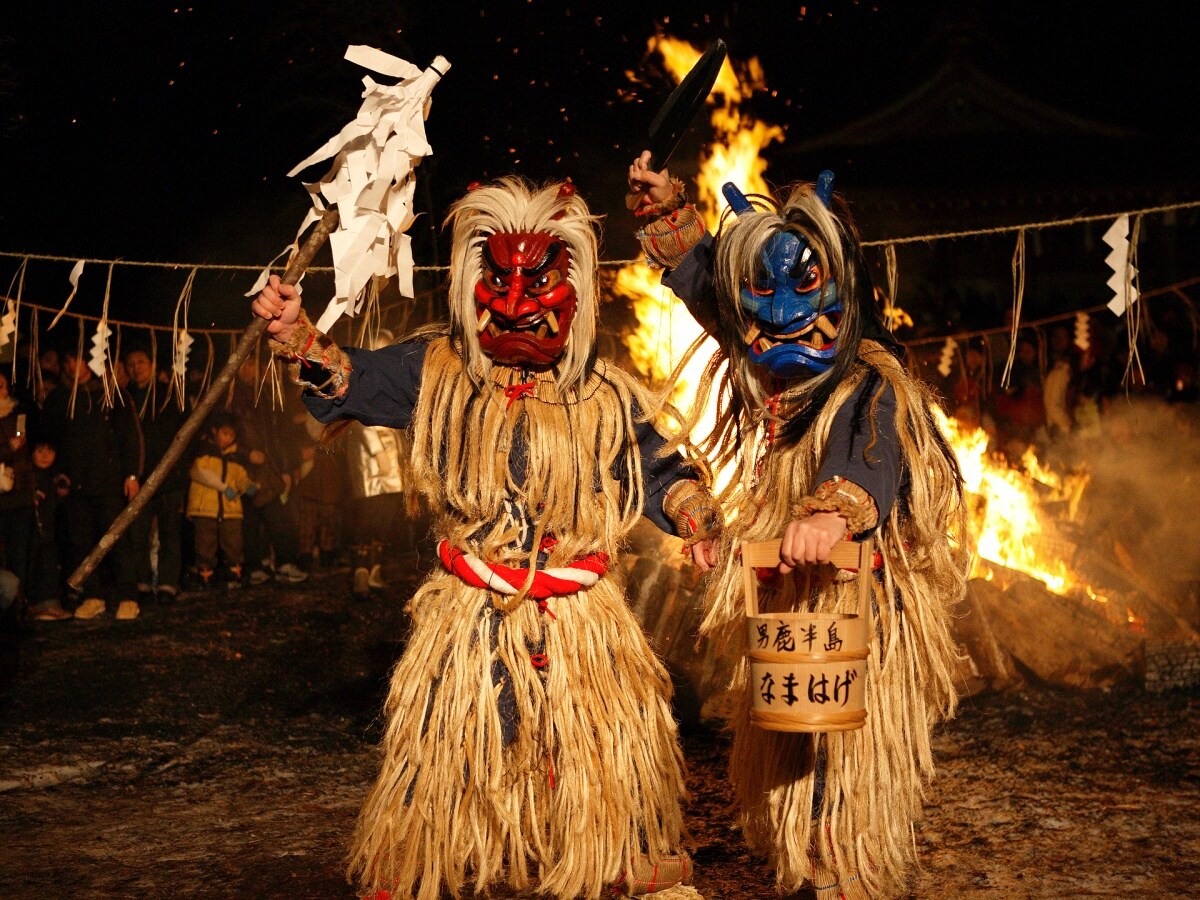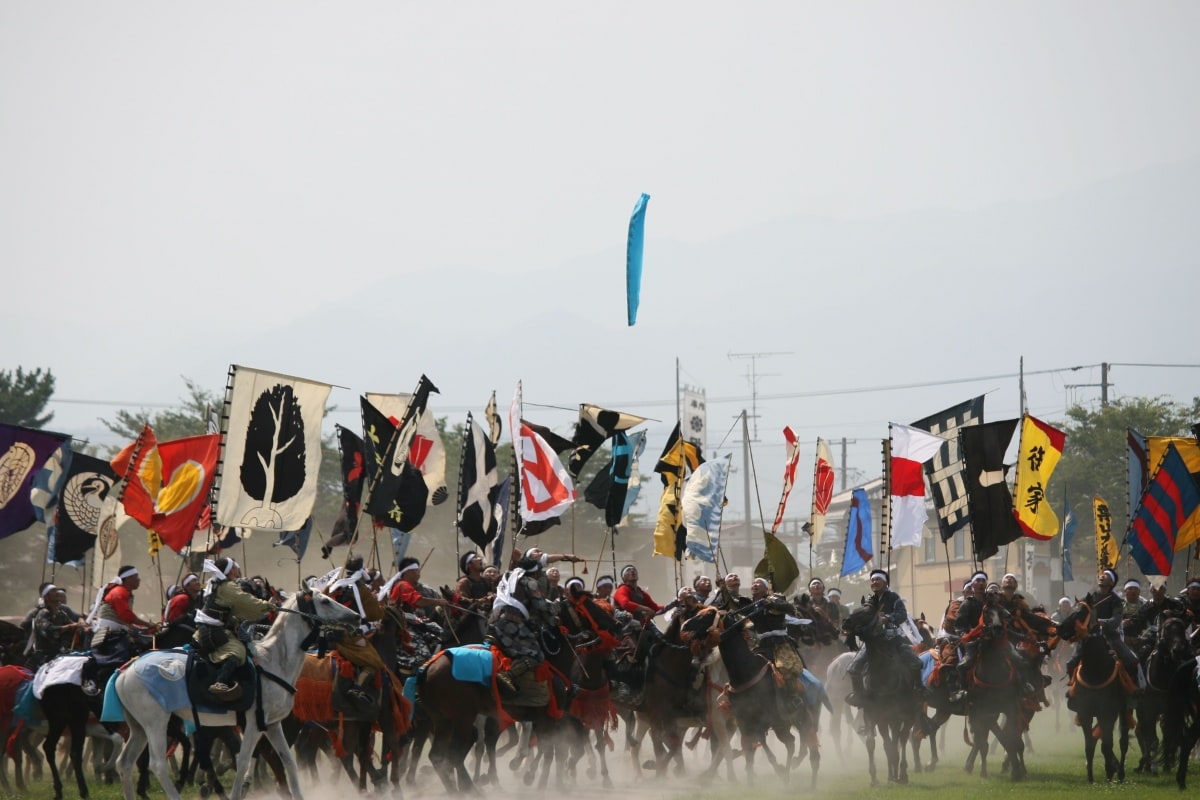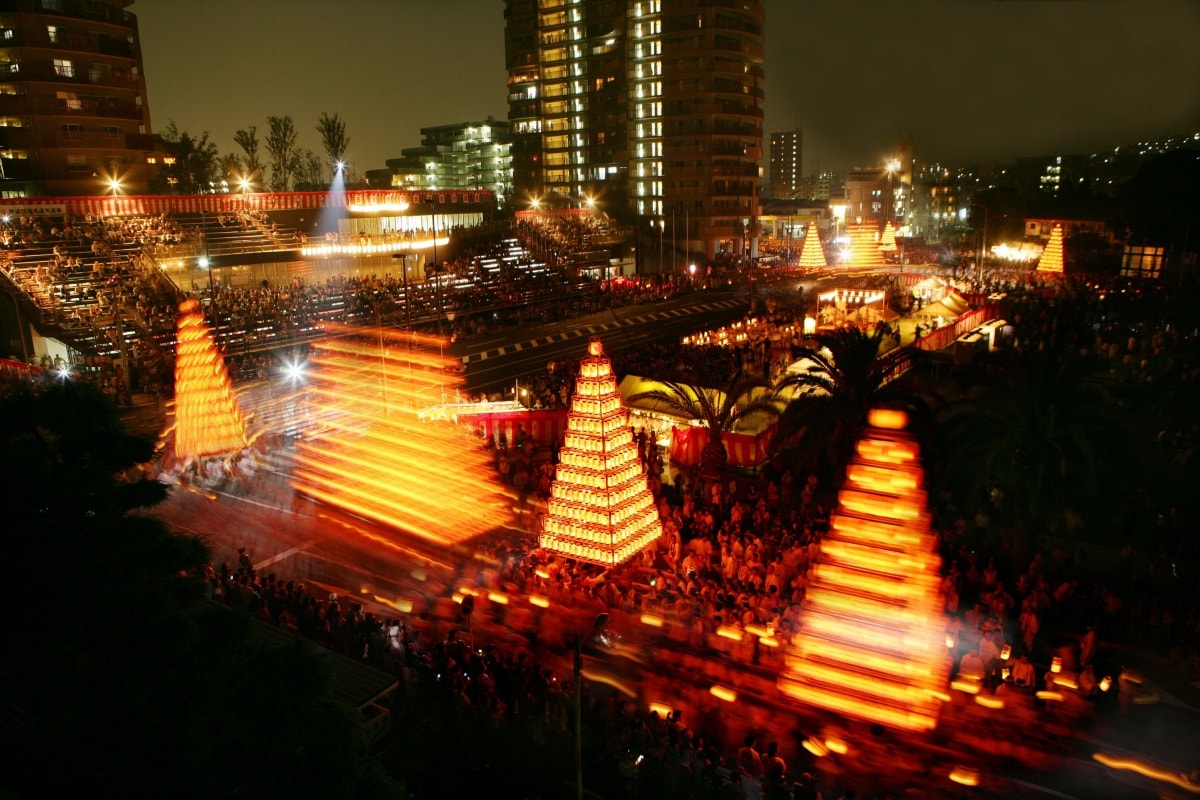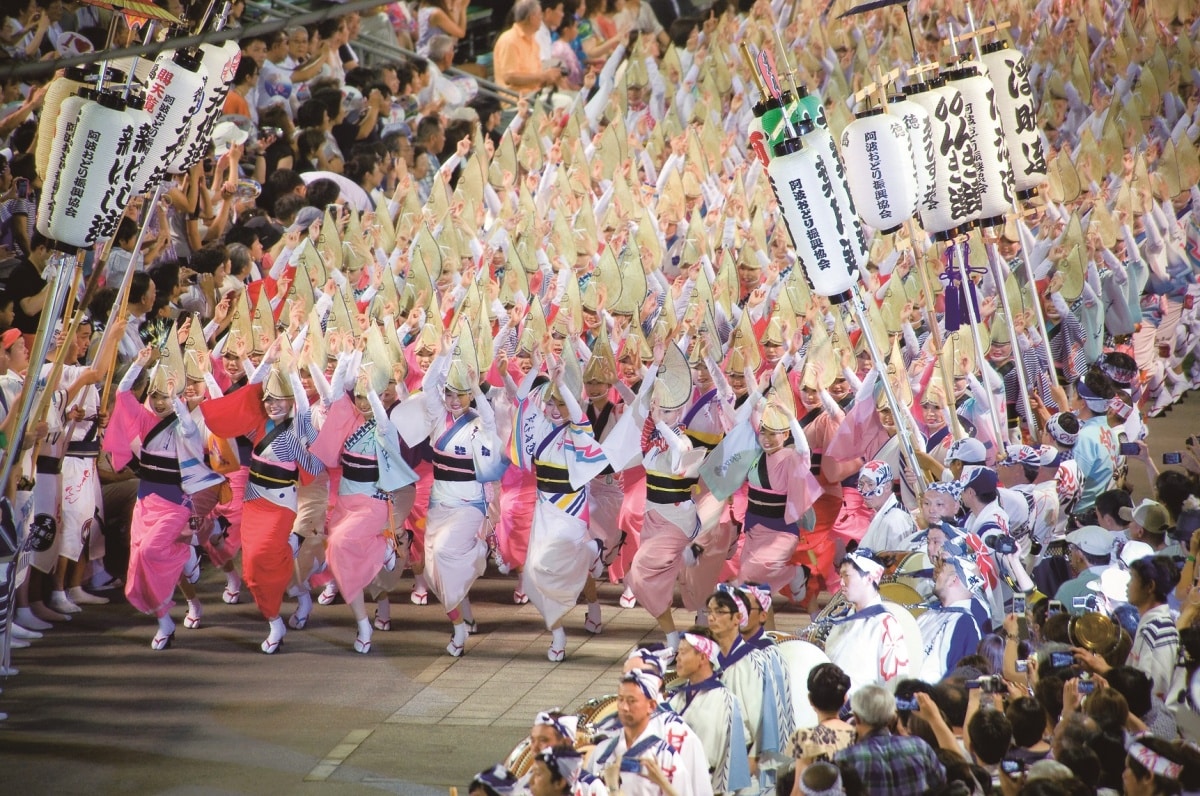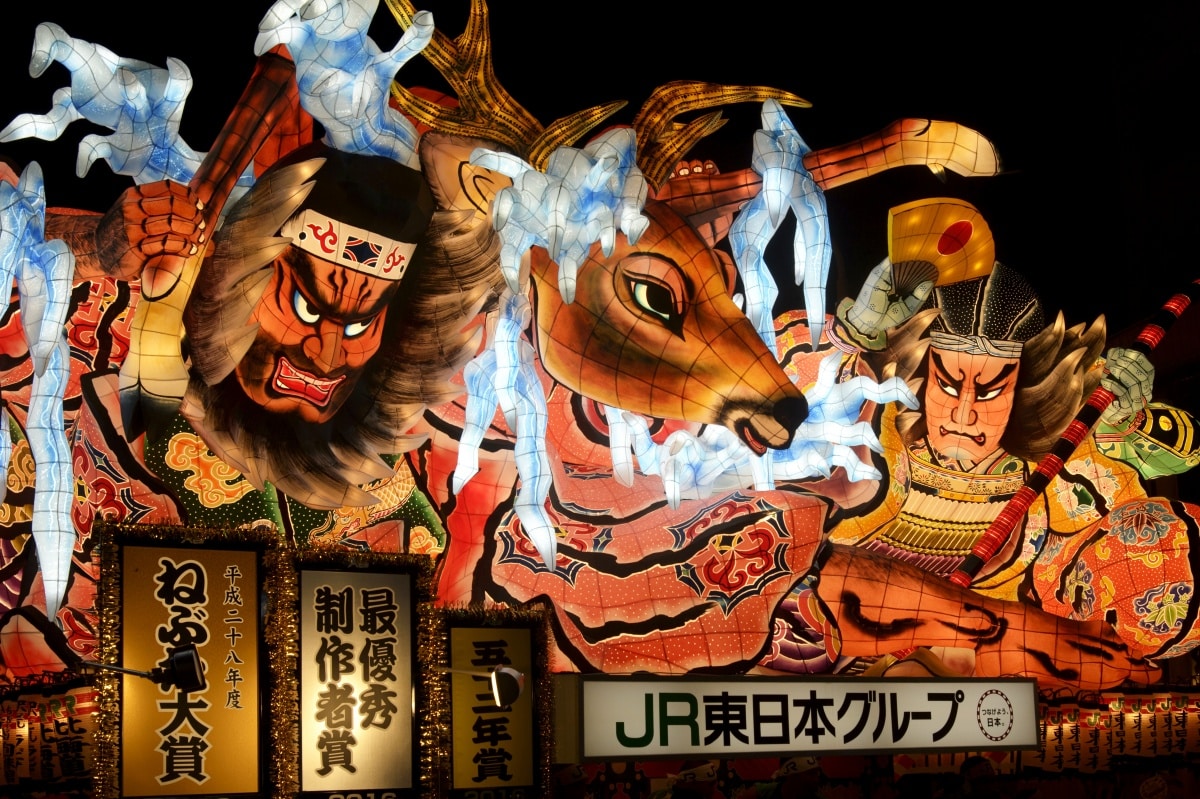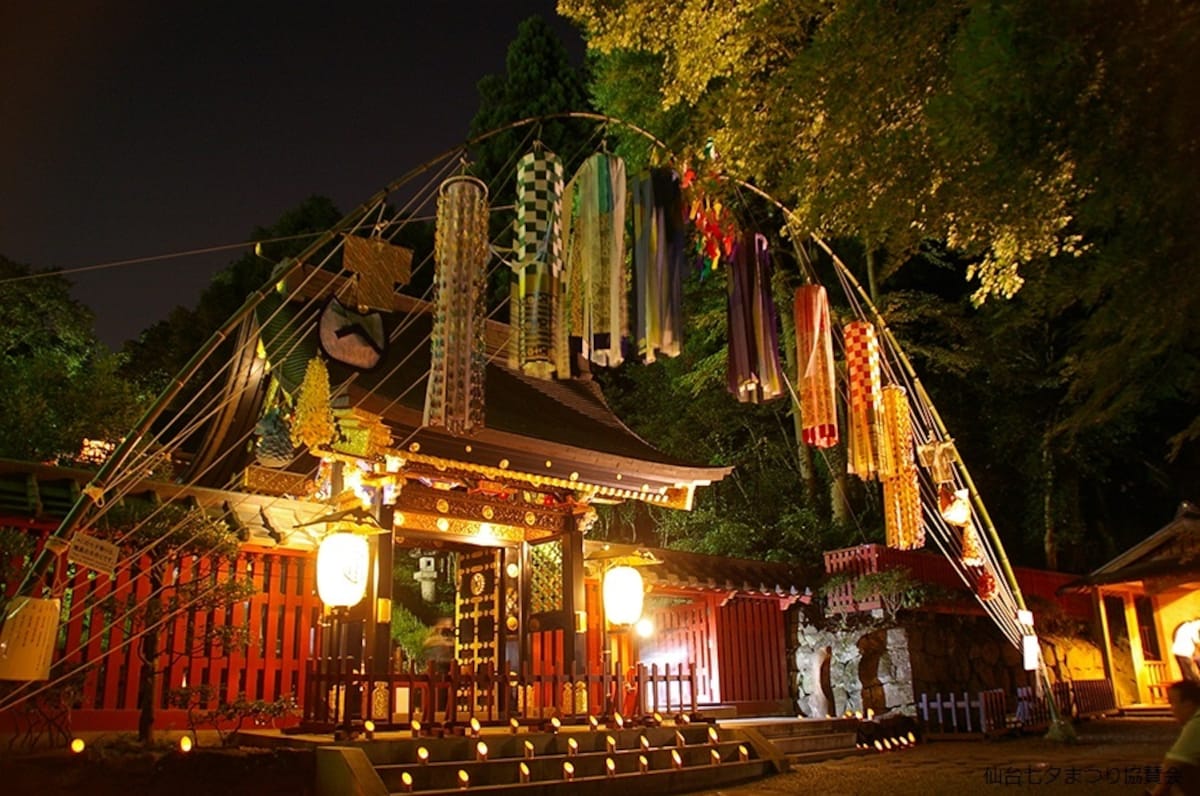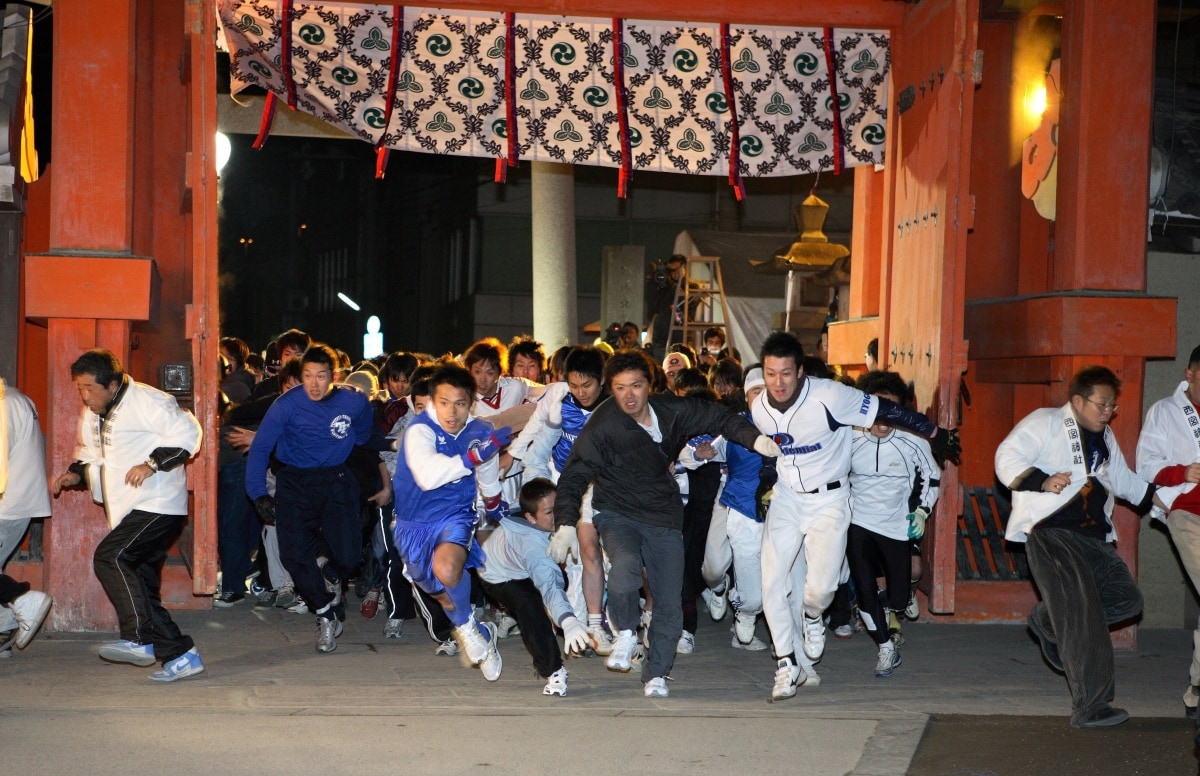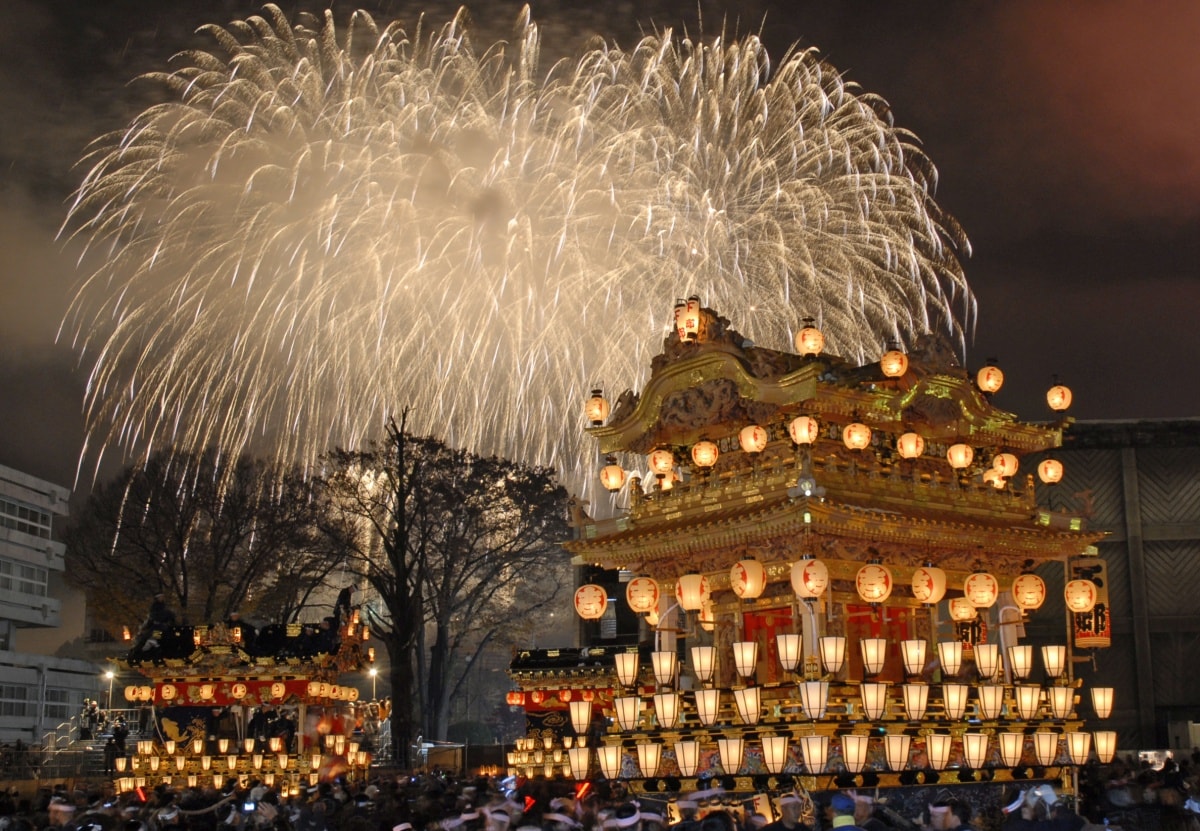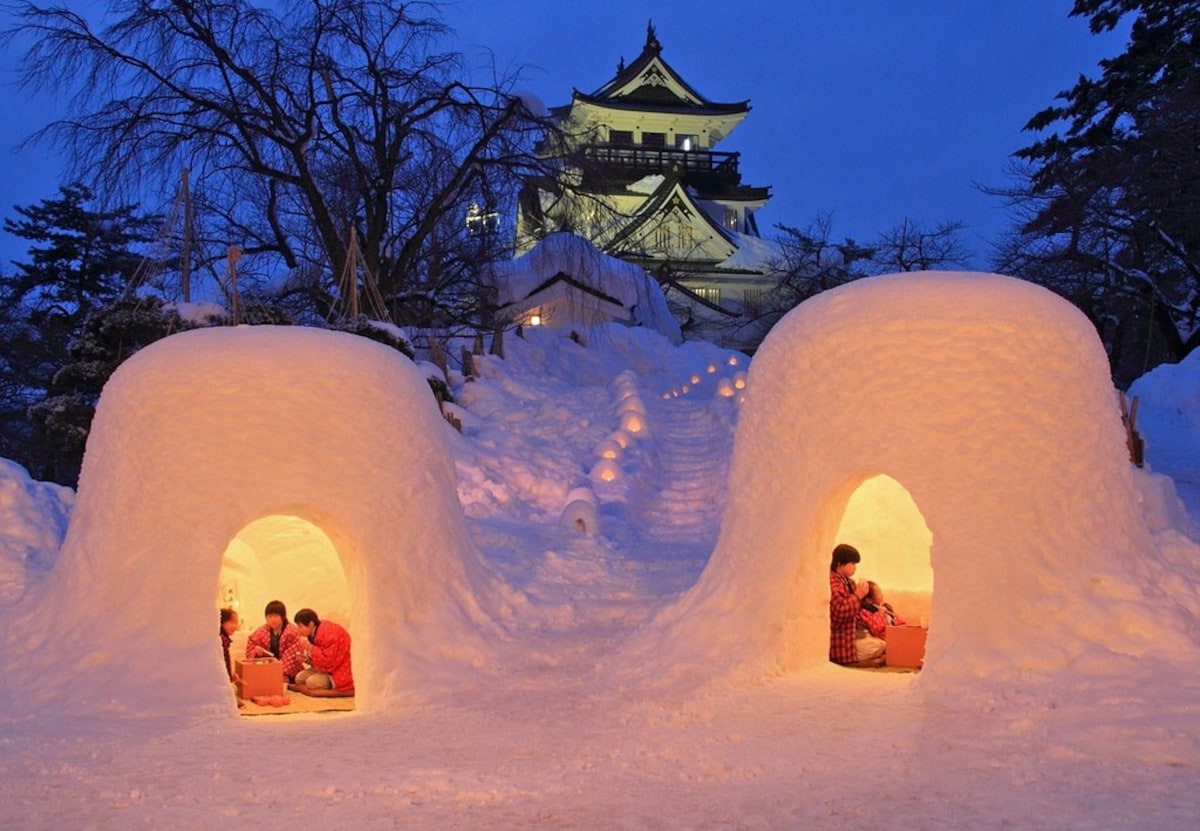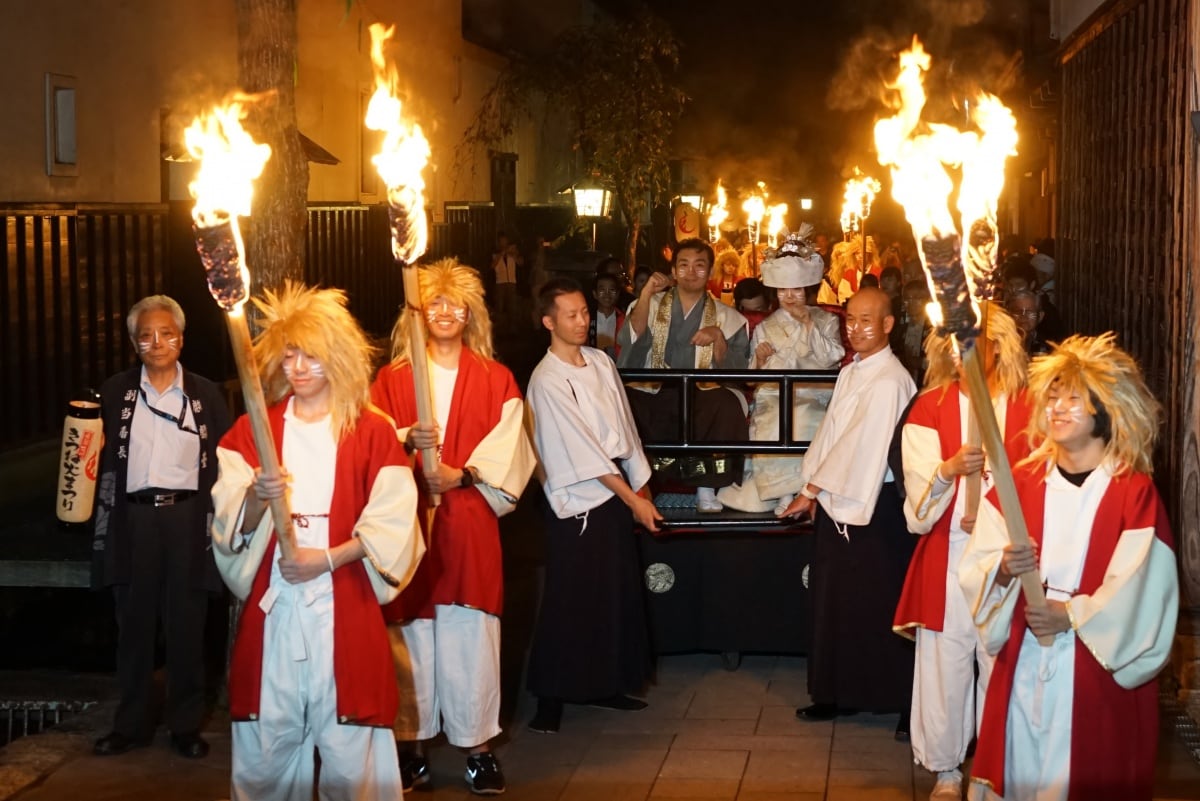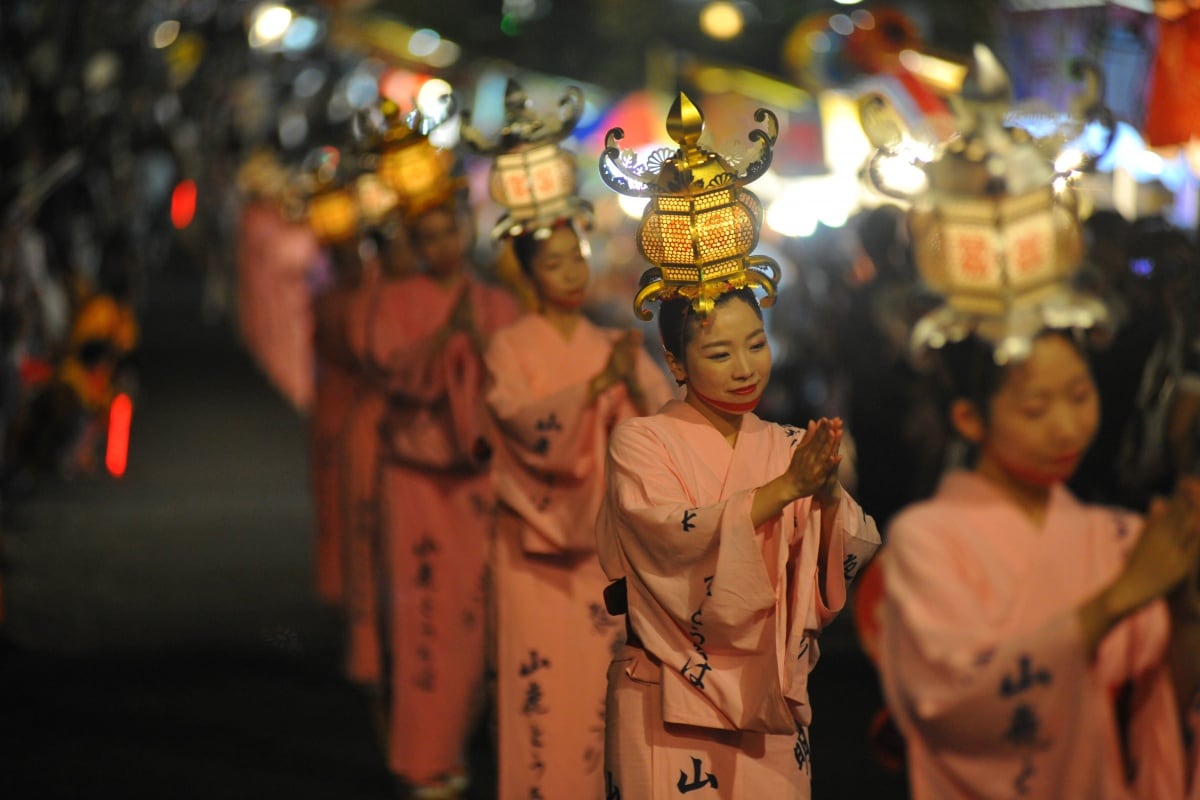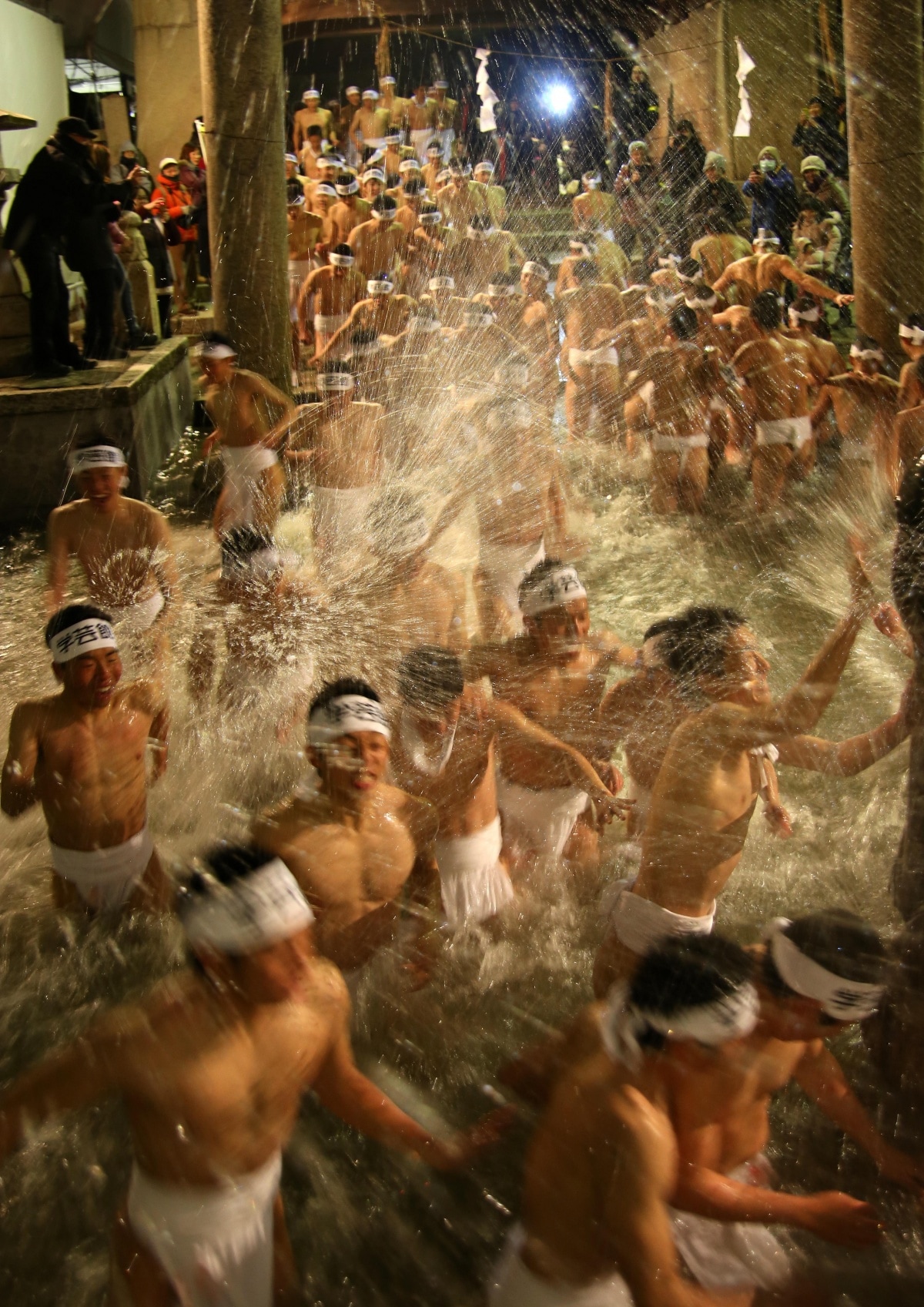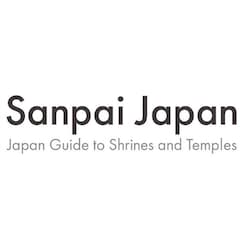15 Unique Festivals Only Found in Japan
Looking for a truly delightfully unusual experience while in Japan? We’ll show you some of the most interesting and unique festivals in the country, perhaps even the world. You can only find these festivals in Japan!
By Sanpai JapanWhat is 'Matsuri?'
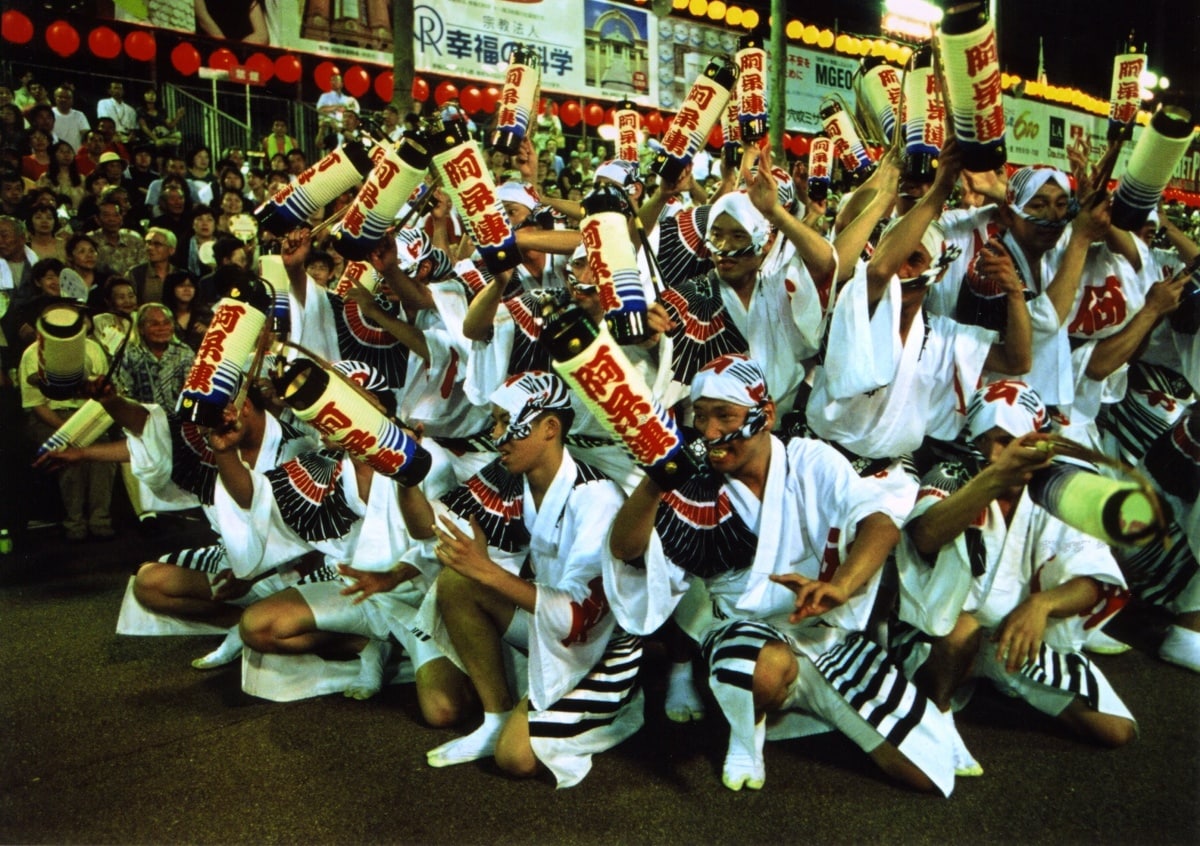
http://sanpai-japan.com/2016/10/31/15-unique-festivals-only-found-in-japan1115/
The word for festival in Japanese is matsuri. The purpose of having traditional events and local events is to create community revitalization. It looks like there are many different kinds of festivals in Japan, however, they all originally derive from entertaining a god.
Festivals are an essential part of Japanese people’s lives. This is because matsuri create extraordinary memories. Living an ordinary and boring life creates stress and exhaustion unknowingly. That’s why matsuri are very important to change our mind and keep us feeling lively. We picked out fifteen stunning festivals in Japan that you might feel are a bit weird. Enjoy our articles and if you are interested in seeing a video about each festival, check out our webpage!
1. Sedo Namahage Festival
This grand winter festival is the fusion of Namahage, a folk tradition, and the Sedo Festival, a Shinto ceremony. Sacred fires light the precincts where the dynamic Namahage dance and drums are performed. Fifteen Namahage performers march down from the mountain bearing torches, bringing the night to its climax. The sticky rice cakes, which Namahage hand out, ward off disaster.
This event is held at Shinzan Shrine, located on Mount Shinzan in Akita Prefecture, and is surrounded by majestic cedar trees. It is one of the most historical and the most revered shrines on the Oga Peninsula, deeply associated with the famous folk tradition of Namahage. This festival is held every February across the precincts and is based upon the old Namahage tradition, which is held every year on New Year’s Eve throughout 80 villages in city of Oga. On New Year’s Eve, young men from the various villages dress as Namahage and go from house to house shouting loudly “Are there any crybabies here?” To the people of Oga, the Namahage are visiting gods that come with the New Year to warn against laziness, and bring protection from illness and disasters, a good harvest and plenty of food from the mountains and sea. In 1978, Oga’s Namahage were designated officially as an Important Intangible Cultural Asset in Japan.
Date: 12-14 February, 2017
Address: Shinzan Shrine, Oga, Akita Prefecture
Access: You can take a shuttle bus from Akita Station
2. Soma-Noumaoi Festival
Have you ever heard about the Soma-Nomaoi Festival? It is a famous horse race festival in Fukushima Prefecture. The festival is organized by three important shrines in Fukushima Prefecture: Ota Shrine, Odaka Shrine (Minami-Soda City) and Nakamura Shrine (Soma City).
The festival’s origin lays in the training of horses for military reasons. Today, the festival is celebrated as a cultural highlight and sightseeing event in the Kyushu area. The festival has a history of more than 1,000 years and today it remembers the society of the Warring States Period of fighting warlords.
The festival is held for three days and men transform into samurai with beautiful costumes. They ride on horses with different flags, which represent their city, over a distance of 1,000 meters. This tradition first started as a military exercise by Taira no Kojiro Masakado, the founder of the Soma Clan. The idea was to train horses as a new military tool. It was possible for this tradition to survive because of the long and continuous rule of the Soma Clan from the Kamakura Period through the end of the Edo Period.
Date: Every year, end of September (Sunday-Monday)
Address: Soma, Fukushima Prefecture
Access: Express bus from Sendai Station or Fukushima Station (West Exit)
3. Tobata Gion Festival
Once a year, people can be seen walking through the town of Tobata shouldering giant 10-meter (32.8-ft) floats with 12 tiers of lanterns. These people wear traditional clothing (happi) and headbands (hachimaki) and to keep their steps in unison, they shout out, ”Yoitosa! Yoitosa!” This event is called the Tobata Gion Yamagasa Festival.
This festival originated from the Tobata Ward in Kitakyushu, Fukuoka Prefecture, back in 1802. At the time, the village people were plagued by an epidemic and they would continuously pray to the gods for the epidemic to cease. Then, one by one, those who were suffering from the plague recovered. The village people believed it was because of the praying, so they built the yamagasa (floats) and celebrated in 1803.
Decorations of the yamagasa date back to 1829 and their curtains tell of the history and tradition. The Tobata Gion Yamagasa Festival consists of three days of shrine festivities, which are held at the Tobata Hachimangu Shrine, the Sugawara Jinja Shrine and Nakabaru Hachimangu Shrine. There are giant floats with 12 traditional decorated flags that are carried through the town during the day. In the evening, the decoration style changes and a unique type of float parades through. Each of these floats is called the “Pyramid of Light” because of the 309 paper lanterns that hang in their 12 tiers. Each float is 10 meters tall and weighs 2.5 tons, so it needs about 80 float-carriers to shoulder it. At the end of the festival, there are four giant floats and four small floats that gather to compete at a competition called the Kyoenkai. Spectators watch in awe of the magnificence and bravado of the show.
Date: Every year, July 22-24
Address: Tobata, Kitakyushu, Fukuoka Prefecture
Access: JR Tobata Station (a five-minute walk)
4. Tokushima Awa Odori Fesitval
If you are interested in attending festivals within Japan, there is none better than the Awa Odori. The Awa Odori is a festival held in Tokushima but is known all across Japan, as well as many parts of the world. This festival rivals Rio Carnival as one of the largest dance events in the world.
The Awa Odori, translated as the Awa Dance, has a history of over 400 years. The troupes that perform for the festival are often invited to foreign countries to perform because their talent is so highly revered. The festival sprawls over a period of four days, typically August 12-15, and takes place in several different locations across the prefecture. The most popular event is held in Tokushima City and draws nearly 1.3 million guests every year. The event runs from 6 p.m. to 10:30 p,m. and transforms the entire landscape of the city into a giant stage for the performers. Watching these performances across plazas, parks, streets and sidewalks, this is definitely a unique and incredible experience you won’t want to miss.
Date: Every year, August 12-15
Address: Tokushima City, Tokushima Prefecture
Access: JR Tokushima Station (10-minute walk)
5. Aomori Nebuta Festival
The Aomori Nebuta Festival is held August 2-7 every year. There are about 20 floats carrying huge dolls and almost 300 million visitors come to see them. This festival was designated as a Significant Intangible Folk Cultural Asset in 1980 and is one of the most famous festivals in Japan.
All the nebuta (lighted floats) have been made by professionals. They cover them in art based upon historical stories. They use wires to make frames and use about 2,500 Japanese papers. The floats (about two meters in height) are topped with huge dolls, each about five meters tall, nine meters wide, seven meters long and four tons in weight. They are absolutely huge!
There are a lot of theories about the origin of this festival; we’ll introduce one of them. During the Nara Period (710-794), the Nebuta Festival was paired with the Star Festival from China, and a local ceremony was held called the Spirit Boat Procession. This event was held in the Tsugaru area of Aomori Prefecture. Since the papers, bamboo and candles are still available today, these are used for making lanterns for today’s festivals. During the Nebuta Festival, they make the lanterns in the shape of giant dolls. Because the origin of this festival comes from the Star Festival, they release lanterns into the river and sea to vanish uncleanness in a purification ceremony during the final day of festival in order to pray for a perfect state of health. This is called “the floating nebuta.”
Festival dancers called haneto dance and jump while chanting “Rassera, rassera” to liven up the festival. There are approximately 90,000 haneto dancers with bells on their yukata, which are called the nebuta bells, or “the bell that brings happiness.” Whoever picks up bells that have fallen from a haneto will receive good luck. You can also receive good luck by being handed the bell from someone else. If you want to participate in the festival, you can rent the costume at shops nearby. Anyone wearing formal haneto wear can participate.
Date: Every year, August 2-7
Address: Aomori City, Aomori
Access: JR Aomori Station (20-minute walk)
6. The Sendai Star Festival
The Star Festival, or Tanabata, is derived from the legend of Vega and Altair. This princess and prince had so much fun being together they stopped working hard on their royal duties. The king was angered by this and decided to separate them by the entire Milky Way galaxy. He allows them to meet once a year across the Milky Way on the night of July 7. This is the origin of the Star Festival and the reason why the festival is usually held on July 7. On that day, Japanese people display bamboo grass with a strip of paper and ornaments to celebrate their reunion. When we write a wish on the strip of paper and display it, it's said that a wish comes true.
The Star Festival is held in several different areas of Japan. Today, we will introduce one of the biggest Star Festival events, which is held in Sendai in the Miyagi Prefecture. The Sendai Star Festival has been passed down through the generations as a traditional event that dates back to the era of Date Masamune (1567-1636), the first lord of Sendai Domain. Star Festivals are traditionally held throughout Japan on July 7, a date based on the old Chinese calendar. However, the Sendai Star Festival is held from August 6 to 8, based on a calendar month later than the old Chinese calendar, in order to keep to the seasonality of an old festival. During the festival, the entire city, including central Sendai neighboring shopping districts, is filled with colorful decorations. More than two million tourists visit the festival every year.
Date: Every year, August 6-8
Address: Sendai, Miyagi Prefecture
Access: JR Sendai Station
7. 'Lucky Men' Race
Ever since the Edo Period, participants gather in front of the shrine’s main gate before 6 a.m. on the 10th of January. At 6 a.m., the shrine’s drum sounds, the gates are opened and the assembled crowd sprints perilously 230 meters (755 feet) to the main hall. The top three finishers are given the title of “Lucky Men,” and of those three, the champion is known as the “Luckiest Man.” The race has been known to attract more than 6,000 runners. Why are they called “lucky men?” This is because there is no history of a woman winning the race. If a woman wins the race, the name of festival will be changed. A woman who is confident she can run faster than any man should take part in this race. If you want to participate in this festival, you don’t need to fill out any preliminary applications, but the place where you start your run depends on a lottery.
Date: 10 January, 2017
Address: Nishinomiya Shrine, Nishinomiya, Hyogo Prefecture
Access: JR Nishinomiya Station (five minutes from the south exit)
8. Eisa Festival
https://www.youtube.com/watch?v=gr_W0Kfgkt8
When it comes to Japan’s southernmost prefecture, Okinawa, the best display of their culture is the Eisa Festival. This festival is held during the last days of the lunar calendar. Dancing and playing musical instruments, male and female performers go from house to house to honor the spirits of their ancestors. The instruments are large and small drums, as well as a typical Okinawan stringed instrument, the sanshin. Opinions differ as to the origin of the Eisa Festival, but some say that in the 17th century a monk came to Okinawa (then the Ryukyuan Kingdom) from Kyoto and translated a Buddhist chant into Ryukyuan, which then became widely known. After World War II, Eisa became not just a custom to honor the ancestors, but also a performance exhibition.
Eisa can be seen throughout Okinawa, although the costuming and dances vary from place to place. For example, there are Eisa performances in which only women dance, and another type called angama in which the dancers wear masks. In the weekend immediately after the lunar calendar holiday, the Okinawan Eisa Festival takes place in Okinawa City. This festival began in 1956, and teams are selected from all over the islands to dance together to the music of the sanshin and drums.
Date: Every year, August 26-28
Address: Okinawa City, Okinawa Prefecture
Access: Okinawa Prefecture is the southernmost prefecture of Japan. It's recommend to use an airplane.
9. Furano Bellybutton Festival (Hokkai Heso Matsuri)
https://www.youtube.com/watch?v=rpZopnttDmk
The rather curious tradition of the Hokkaido Bellybutton Dance (Heso Odori) began in 1969. It was decided that a town festival was needed in order to unify and energize Furano’s people, who are spread over a large area. Inspired by Furano’s location in the very middle of Hokkaido, the festival organizers came up with the idea of a dance featuring the bellybutton.
This dance was not exactly an immediate hit. In the first official Heso Matsuri, only 11 people joined the dance. However, over the years, Heso Matsuri has become one of the most famous summer festivals in Hokkaido, drawing people from around Japan and the world. Last year, over 5,000 people participated in the two-day dance, with thousands more gathering to watch. Humor is a key reason for the festival’s success. Dancers make their heso (bellybutton) part of a face, using paint, special costumes and props. There are many innovative variations to the simple, energetic Heso Odori. Competition is intense, as dancers compete for prizes and glory in various categories.
Date: Every year, September 28-29
Address: Furano, Hokkaido Prefecture
Access: JR Furano Station (five-minute walk)
10. The Chichibu Night Festival
The Chichibu Night Festival is the festival of the Chichibu Shrine in Chichibu City, Saitama Prefecture, which is located just 90 minutes from central Tokyo. The festival is held every year on December 2-3. The Chichibu Night Festival is considered one of the top three Japanese festivals that feature a dashi (a float), a low platform on wheels with various decorations like lanterns, tapestries and gilded woodcarvings that is carried in a festival. The float is also called danjiri in Osaka. The other top two festivals are the Kyoto Gion Festival and the Takayama Festival.
This festival also features other attractions, such as fireworks, which last almost two and a half hours, and gives you the rare opportunity to enjoy Japanese fireworks during winter. The main events of the Chichibu Festival take place on December 3. In the afternoon and early evening, the six floats are displayed in their respective neighborhoods and at the Chichibu Shrine before being pulled through the streets of Chichibu towards the city hall at around 7:00 p.m. The climax takes place on the plaza in front of the city hall, when one float after another is pulled up the slope onto the plaza and they all line up. From 7:30 p.m. to 10 p.m., a long, spread out fireworks display is held, which can be seen from many places around town.
Date: December 3, 2016
Access: Chichibu Line from Kumagaya Station to Chichibu Station; Seibu Line from Ikebana Station to Seibu Chichibu Station
Address: Chichibu Shrine, Saitama Prefecture
11. Yokote Kamakura Snow Festival
Every year on February 15, beginning 450 years ago, there is a traditional event in honor of the Japanese water deity. The word kamakura means igloo. During the Kamakura Festival, you can see many big kamakura and mini kamakura at Yokote City in Akita Prefecture. There are several origins and one theory is that kamakura originally stands for “where a Japanese water deity is.”
At the festival, you can get inside of an igloo and toss money into the offering box in the center in honor of the water deity. When you toss the coin, you can pray for the safety of your house, the prosperity of your business and the success of harvest. Nowadays, children invite people to go inside of the kamakura and entertain guests while serving any amaeko (sweet sake) and rice cakes. Then, guests offer the coin to the Japanese water deity. Contributing to the water deity is said to bring good luck upon the well water that farmers use for their crops.
In 1969, more traffic arose, and fewer kamakura were made due to regulations by the city government. This issue caused the movement of mini kamakura and created a new street of kamakura, now called Kamakura Street. That’s the reason why there are mini kamakura now. You can experience building a kamakura at this new location. The view of several kamakura gathered together, with candles lit inside them, is absolutely beautiful. There is even a cute kamakura that has a heart-shaped entrance. You can get a free bus ride to see the kamakura around this location.
Date: February 13-17, 2017
Address: Kamakura City Hall (Park), Yokote, Akita Prefecture
Access: JR Yokote Station (10-minute walk)
12. Torch Fire Festival (Taimatsu Akashi Festival)
https://www.youtube.com/watch?v=fzDLcR747vA
The festival of Sukagawa Taimatsu Akashi boasts a history of over 400 years. It is one of Japan’s three main fire festivals and said to have begun as a way to mourn the spirits of the soldiers who lost their lives when the army of Date Masamune attacked Sukagawa Castle. Giant torches 10 meters in length and 3 tons in weight are carried around the town by the youths of Sukagawa. They are taken to Gorozan where they are set alight.
When the Great East Japan Earthquake of March 11 hit, it made the local people of Sukagawa worry and wonder whether the festival should be held or called off. This is because a great deal of people died and suffered from losing their friends and family in that year.
After deep deliberation, the people of Sukagawa decided to hold the event in order to mourn the spirits of the people who died in the earthquake and tsunami in hopes of recovery. The people who held this event hoped to help the suffering people find hope. Unfortunately, the people of Sukagawa were not in the clear yet. They soon realized that the torches made in Fukushima Prefecture were polluted by nuclear radiation so they couldn’t use them for the festival. The people of Sukagawa asked all over the prefecture for support to get torches. Fortunately, the entire region supported them as much as possible so they could hold the event safely.
The hard work of the Sukagawa people to make sure this festival occurs is evidence of what a valuable and precious festival it is. It is surely one worth seeing for yourself.
Date: 4 November, 2016 at 6:30 p.m.
Address: Sukagawa, Fukushima Prefecture
Access: JR Sukagawa Station (15-minute walk)
13. The Hida Furukawa Kitsune Festival
The Hida Furukawa Kitsune Fire Festival is organized at night once a year and is based upon a fairy tale from the Gifu Hida Furukawa region. 400 years ago, there was a wedding ceremony for Otonosama, the king living in Furukawa, and for Okon, the daughter of the fox god. The ceremony begins from the Mikura Inari Shrine. Through the town, over 50 people carry torches and lanterns and several dances are performed by daughters. After the ceremony, you can see a dance said to strengthen the groom and bride’s connection.
You can also see a five-meter-long rope, called the big snake or dangomaki, which brings prosperity in business and celebrates the wedding.
Anyone who saw the procession and fox getting married can make a wish, such as for productiveness of grain, safety of one’s family or prosperity in business. These main grooms and brides are chosen from applicants from across the entire country. Anyone can be one of them.
On the festival day, all the participants wear special kitsune (fox) makeup. At the festival location, general public participants in the procession can also be given the same makeup. The surrounding town will be full of kitsune-related activities and events, such as special dishes at restaurants that tourists can enjoy. You can also enjoy sightseeing in the Hida Furukawa town where they have the Seto River made of stone, and you can go sightseeing around the Shirakabe-Dozou houses. There is a station that shows up in the popular movie called Kimi no Na wa (Your Name), which is a “Furukawa Station” motif. If you are lucky enough, you can time your visit perfectly to recreate the scene.
Date: the last Saturday in September
Address: Hida, Gifu Prefecture
Access: JR Hidafurukawa Station (five-minute walk)
14. Yamaga Toro Festival
The Yamaga Toro Matsuri is one of Kumamoto's premiere summer festivals. According to legend, when the 12th emperor of Japan, Keiko, got near the Yamaga Ohashi shore, he was surrounded by fog. Yamaga civilians hung torches to make his way travels easier. Because of this legend, the Yamaga civilians later worshiped Keiko at the Omiya Shrine and they donated fire to him every year. Beginning in the Muromachi Era, paper lanterns turned to golden lanterns, and women put them on their heads and danced. This was called the Yamaga Lantern Dance. It was called the Thousand People Lantern Dance later on, which is its famous name nowadays.
About 30 lanterns are contributed to the festival. The traditional craft lanterns, or Yamaga lanterns from the Muromachi Era, are made of only sticks and papers made from local mulberry fruit, instead of using woods and metals. Contrary to the usual method, these lanterns are made without pasting several papers over themselves to make an empty space inside of the lantern, therefore they are called “boneless lanterns.”
Long ago, the technology of making Yamaga lanterns was inherited by the toroshi (masters of making lanterns). The famous golden lantern, the architectural style of shrines, the Japanese architectural style drawing room, and the constructing of castles are all done by hand. You can see beautiful lanterns at Yamaga Lantern Mingeikan (Yamaga Lantern Folk Crafts Museum) and the Omiya Shrine and Toroden.
The song that is sung and danced to at the festival is called Yoheho-bushi (Yoheho Rhythm). The lyrics of this song have been changed by Ujo Noguchi in 1933, but Yamaga locals love singing the original one from Meiji Era (1868-1912). The “Yoheho” is written in a unique dialect originally from the Higo region. It has often been used to excite people and convince people to drink. At the end of the festival, there is the agari toro. This is when the toroshi contributes the lantern (which was made for this moment) to god at the last night of festival days. This lantern is exhibited on the street corner throughout the festival term. The civilians carry it to the Omiya Shrine, while chanting “Haai toro, haai toro” on the way.
In winter, there is an event called “Yamaga Lantern Romance” where traditional Japanese umbrellas and lanterns are hung and decorated all across the town. At night, you can enjoy seeing the lit up objects, which differs from the daylight scenery. The picture of women wearing yukata and dancing gracefully with golden lanterns on their heads reminds Japanese people of the nostalgia and beauty of Japan.
Date: Every year, August 15-16
Address: Yamaga Elementary School, Yamaga, Kumamoto Prefecture
Access: A five minutes’ walk from Yamaga Onsen bus stop. The Yamaga Onsen bus stop is about 40 minutes’ ride from Tamana Station on the Kyushu Sanko bus bound for Yamaga Onsen. Tamana Station about 20 minutes from JR Kumamoto Station by limited express train on the JR Kagoshima Honsen Line.
15. Naked Festival
The naked festival is a type of Japanese festival, in which participants wear a minimum amount of clothing; usually just a Japanese loincloth (called fundoshi), sometimes with a short happi coat, and rarely completely naked. Naked festivals are held in dozens of places throughout Japan every year, usually in the summer or winter. The most famous festival is the Saidaiji Eyo held at Saidaiji Temple in Okayama Prefecture.
About 500 years ago, Saidaiji Temple gave out the ofuda, which is a type of household amulet, from the temple to worshipers. It was believed that the person who gets it would get luck. Saidaiji Eyo is known as a festival for men, but there are some women. At 7 p.m., there is a group wearing white gowns coming to Saidaiji Temple garden and praying for the safe success of this festival and bathe in cold water to purify their body in order to pray to a god. They also play the drums called “Eyotaiko” which marks the beginning of the festival.
Everybody can join the naked festival. There, tabi footwear and fundoshi will be sold on the festival day for those who participate. It is crowded on the festival day with over 30,000 people who visit in order to find luck.
Date: the last Saturday in February
Address: Saidaiji Temple, Okayama, Okayama Prefecture
Access:
• By train: From JR Okayama Station, get off at the Saidaiji Station (Akou Line), then walk for 10 minutes.
• By express bus: Take the Ryoubi Bus from Okayama Station bus terminal and get off at Saidaiji Bus Terminal, then walk 10 minutes.


